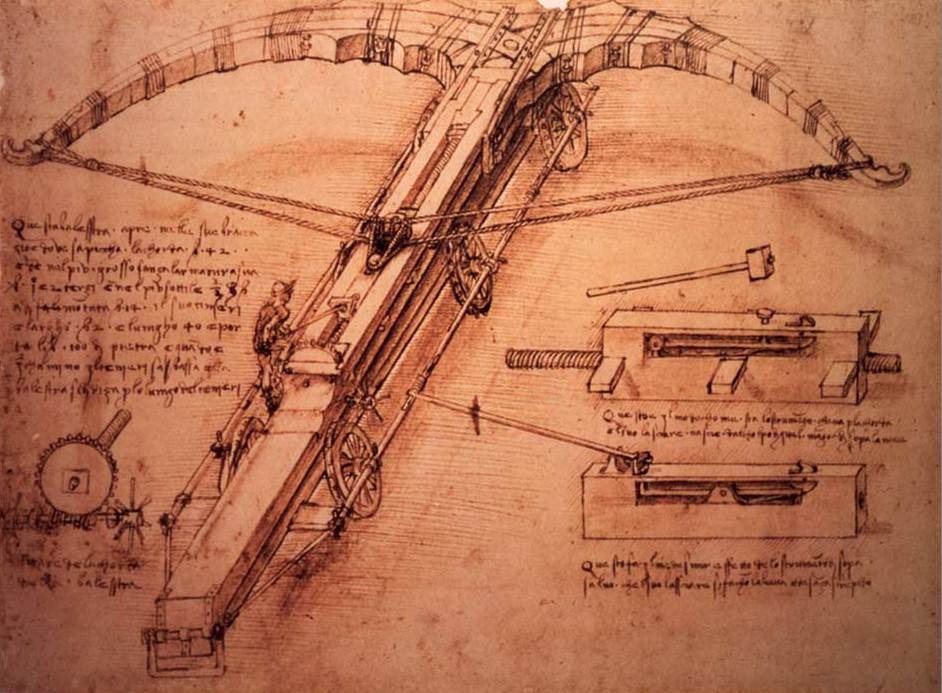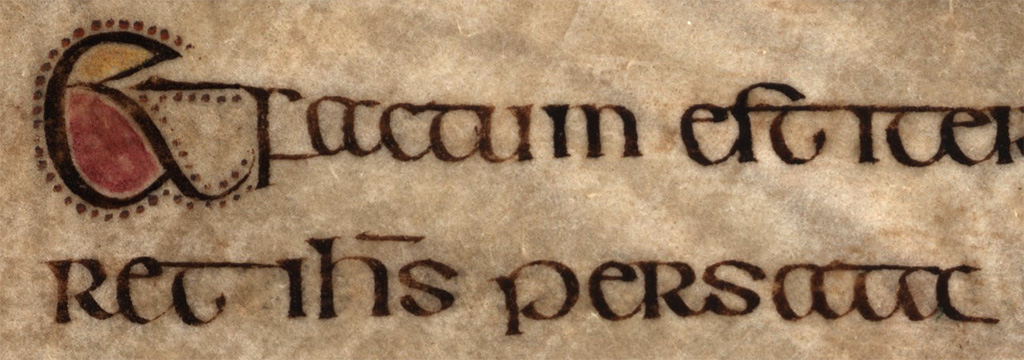|
Ambrosiana Orosius
The Bobbio Orosius (Milan, Biblioteca Ambrosiana MS D. 23. Sup.) is an early 7th century Insular manuscript of the ''Chronicon'' of Paulus Orosius. The manuscript has 48 folios and measures 210 by 150 mm. It is thought to have been produced at the scriptorium of Bobbio Abbey, which was founded by Saint Columbanus in 612. It appears in an inventory of the monastic library done in 1461. The monks gave the manuscript to the Ambrosian Library when it was founded in 1606 by Cardinal Federico Borromeo. Contents Carpet page It contains the earliest surviving carpet page in Insular art. The carpet page is on folio 1v. Although it is simpler in design than later carpet pages and contains motifs not found in later carpet pages, it shows a subtlety of pattern and alternation of colors common to Insular manuscripts. It consists of a large central rosette surrounded by four corner rosettes, all contained within a rectangular frame. The vertical panels of the frame contain cable m ... [...More Info...] [...Related Items...] OR: [Wikipedia] [Google] [Baidu] |
Federico Borromeo
Federico Borromeo (18 August 1564 – 21 September 1631) was an Italian cardinal and Archbishop of Milan, a prominent figure of Counter-Reformation Italy. Early life Federico Borromeo was born in Milan as the second son of Giulio Cesare Borromeo, Count of Arona, and Margherita Trivulzio. The family was influential in both the secular and ecclesiastical spheres and Federico was cousin of Saint Charles Borromeo, the latter previous Archbishop of Milan and a leading figure during the Counter-Reformation. He studied in Bologna with Cardinal Gabriele Paleotti and in 1580, at the age of 16, he asked to become a Jesuit. His cousin Charles Borromeo dissuaded him and sent him to the Collegio Borromeo of Pavia where he remained five years.. In May 1585 he earned a doctorate in theology at the University of Pavia. Following the death of his cousin Charles, he was sent to Rome for higher studies, where he was strongly influenced by Philip Neri, Caesar Baronius and Robert Bellarmine. Feder ... [...More Info...] [...Related Items...] OR: [Wikipedia] [Google] [Baidu] |
Illuminated Histories
{{disambiguation ...
Illuminated may refer to: * "Illuminated" (song), by Hurts * Illuminated Film Company, a British animation house * ''Illuminated'', alternative title of Black Sheep (Nat & Alex Wolff album) * Illuminated manuscript See also * Illuminate (other) * Illumination (other) * Illuminations (other) * Illuminator (other) Illuminator may refer to: * A light source * Limner, an illustrator of manuscripts * Illuminator radar * The Illuminator, a political art collective based in New York City * Illuminator (Marvel Comics), a Christian superhero appearing in Americ ... [...More Info...] [...Related Items...] OR: [Wikipedia] [Google] [Baidu] |
7th-century Illuminated Manuscripts
The 7th century is the period from 601 (Roman numerals, DCI) through 700 (Roman numerals, DCC) in accordance with the Julian calendar in the Common Era. The spread of Islam and the Muslim conquests began with the unification of Arabia by Muhammad starting in 622. After Muhammad's death in 632, Islam expanded beyond the Arabian Peninsula under the Rashidun Caliphate (632–661) and the Umayyad Caliphate (661–750). The Muslim conquest of Persia in the 7th century led to the downfall of the Sasanian Empire. Also conquered during the 7th century were Muslim conquest of Syria, Syria, Palestine (region), Palestine, Muslim conquest of Armenia, Armenia, Muslim conquest of Egypt, Egypt, and Muslim conquest of the Maghreb, North Africa. The Byzantine Empire suffered setbacks during the rapid expansion of the Caliphate, a mass incursion of Slavs in the Balkans which reduced its territorial limits. The decisive victory at the Siege of Constantinople (674–678), Siege of Constantinople in ... [...More Info...] [...Related Items...] OR: [Wikipedia] [Google] [Baidu] |
Bobbio Jerome
The Bobbio Jerome (Milan, Biblioteca Ambrosiana MS S. 45. sup.) is an early seventh-century manuscript copy of the '' Commentary on Isaiah'' attributed to St. Jerome. The manuscript has 156 pages and measures 235 by 215 mm. It is a palimpsest that previously contained a sixth-century copy of the Gothic translation of the Bible by Ulfilas written in Gothic uncial, with Rustic capitals Rustic capitals ( la, littera capitalis rustica) is an ancient Roman calligraphic script. Because the term is negatively connoted supposing an opposition to the more 'civilized' form of the Roman square capitals, Bernhard Bischoff prefers to call ... as a display script. The illumination of the manuscript consists of a large initial N on page two of the manuscript and several other minor initials. The N is as large as nine lines of the main text. It is written in black ink and decorated by whorl and cross patterns and pelta motifs. There are touches of green and orange. The cross bar is f ... [...More Info...] [...Related Items...] OR: [Wikipedia] [Google] [Baidu] |
Book Of Durrow
The Book of Durrow is an illuminated manuscript dated to c. 700 that consists of text from the four Gospels gospel books, written in an Irish adaption of Vulgate Latin, and illustrated in the Insular script style.Moss (2014), p. 229 Its origin and dating has been subject to much debate. The book was created in or near Durrow, County Offaly, on a site founded by Colum Cille (or Columba) (c. 521-97), rather than the sometimes proposed origin of Northumbria, a region that had close political and artistic ties with Ireland, and like Scotland, also venerated Colum Cille.O'Neill (2014), p. 14 Historical records indicate that the book was probably at Durrow Abbey by 916, making it one of the earliest extant Insular manuscripts. It is badly damaged, and has been repaired and rebound many times over the centuries. Today it is in the Library of Trinity College Dublin (TCD MS 57). Description It is the oldest extant complete illuminated Insular gospel book, for example predating the B ... [...More Info...] [...Related Items...] OR: [Wikipedia] [Google] [Baidu] |
Chevron (insignia)
A chevron (also spelled cheveron, especially in older documents) is a V-shaped mark or symbol, often inverted. The word is usually used in reference to a kind of fret in architecture, or to a badge or insignia used in military or police uniforms to indicate rank or length of service, or in heraldry and the designs of flags (see flag terminology). Ancient history Appearing on pottery and petrographs throughout the ancient world, the chevron can be considered to be one of the oldest symbols in human history, with V-shaped markings occurring as early as the Neolithic era (6th to 5th millennia BC) as part of the Vinča symbols inventory. The Vinča culture responsible for the symbols appear to have used the chevron as part of a larger proto-writing system rather than any sort of heraldic or decorative use, and are not known to have passed the symbol on to any subsequent cultures.Mäder, Michael: ''Ist die Donauschrift Schrift?'' Budapest: Archaeolingua. , (2019), Many compa ... [...More Info...] [...Related Items...] OR: [Wikipedia] [Google] [Baidu] |
Rosette (design)
A rosette is a round, stylized flower design. Origin The rosette derives from the natural shape of the botanical rosette, formed by leaves radiating out from the stem of a plant and visible even after the flowers have withered. History The rosette design is used extensively in sculptural objects from antiquity, appearing in Mesopotamia, and in funeral steles' decoration in Ancient Greece. The rosette was another important symbol of Ishtar which had originally belonged to Inanna along with the Star of Ishtar. It was adopted later in Romaneseque and Renaissance architecture, and also common in the art of Central Asia, spreading as far as India where it is used as a decorative motif in Greco-Buddhist art. Ancient origins One of the earliest appearances of the rosette in ancient art is in early fourth millennium BC Egypt. Another early Mediterranean occurrence of the rosette design derives from Minoan Crete; Among other places, the design appears on the Phaistos Disc, recov ... [...More Info...] [...Related Items...] OR: [Wikipedia] [Google] [Baidu] |
Carpet Page
A carpet page is a full page in an illuminated manuscript containing intricate, non-figurative, patterned designs.Moss, 57 They are a characteristic feature of Insular manuscripts, and typically placed at the beginning of a Gospel Book. Carpet pages are characterised by mainly geometrical ornamentation which may include repeated animal forms. They are distinct from pages devoted to highly decorated historiated initials, though the style of decoration may be very similar. Carpet pages are characterised by ornamentation with brilliant colors, active lines and complex patterns of interlace. They are normally symmetrical, or very nearly so, about both a horizontal and vertical axis, though for example the page at right is only symmetrical about a vertical axis. Some art historians find their origin in similar Coptic decorative book pages, and they also clearly borrow from contemporary metalwork decoration. Oriental carpets, or other textiles, may themselves have been influences. ... [...More Info...] [...Related Items...] OR: [Wikipedia] [Google] [Baidu] |
Biblioteca Ambrosiana
The Biblioteca Ambrosiana is a historic library in Milan, Italy, also housing the Pinacoteca Ambrosiana, the Ambrosian art gallery. Named after Ambrose, the patron saint of Milan, it was founded in 1609 by Cardinal Federico Borromeo, whose agents scoured Western Europe and even Greece and Syria for books and manuscripts. Some major acquisitions of complete libraries were the manuscripts of the Benedictine monastery of Bobbio (1606) and the library of the Paduan Vincenzo Pinelli, whose more than 800 manuscripts filled 70 cases when they were sent to Milan and included the famous ''Iliad'', the '' Ilias Picta''. History During Cardinal Borromeo's sojourns in Rome, 1585–95 and 1597–1601, he envisioned developing this library in Milan as one open to scholars and that would serve as a bulwark of Catholic scholarship in the service of the Counter-Reformation against the treatises issuing from Protestant presses. To house the cardinal's 15,000 manuscripts and twice that many p ... [...More Info...] [...Related Items...] OR: [Wikipedia] [Google] [Baidu] |
Insular Script
Insular script was a medieval script system originating from Ireland that spread to Anglo-Saxon England and continental Europe under the influence of Irish Christianity. Irish missionaries took the script to continental Europe, where they founded monasteries such as Bobbio. The scripts were also used in monasteries like Fulda, which were influenced by English missionaries. They are associated with Insular art, of which most surviving examples are illuminated manuscripts. It greatly influenced Irish orthography and modern Gaelic scripts in handwriting and typefaces. Insular script comprised a diverse family of scripts used for different functions. At the top of the hierarchy was the Insular half-uncial (or "Insular majuscule"), used for important documents and sacred text. The full uncial, in a version called "English uncial", was used in some English centres. Then "in descending order of formality and increased speed of writing" came "set minuscule", "cursive minuscule" a ... [...More Info...] [...Related Items...] OR: [Wikipedia] [Google] [Baidu] |
Columbanus
Columbanus ( ga, Columbán; 543 – 21 November 615) was an Irish missionary notable for founding a number of monasteries after 590 in the Frankish and Lombard kingdoms, most notably Luxeuil Abbey in present-day France and Bobbio Abbey in present-day Italy. Columbanus taught an Irish monastic rule and penitential practices for those repenting of sins, which emphasised private confession to a priest, followed by penances levied by the priest in reparation for the sins. Columbanus is one of the earliest identifiable Hiberno-Latin writers. Sources Most of what we know about Columbanus is based on Columbanus' own works (as far as they have been preserved) and Jonas of Susa's ''Vita Columbani'' (''Life of Columbanus''), which was written between 639 and 641. Jonas entered Bobbio after Columbanus' death but relied on reports of monks who still knew Columbanus. A description of miracles of Columbanus written by an anonymous monk of Bobbio is of much later date.O'Hara, Alexan ... [...More Info...] [...Related Items...] OR: [Wikipedia] [Google] [Baidu] |





